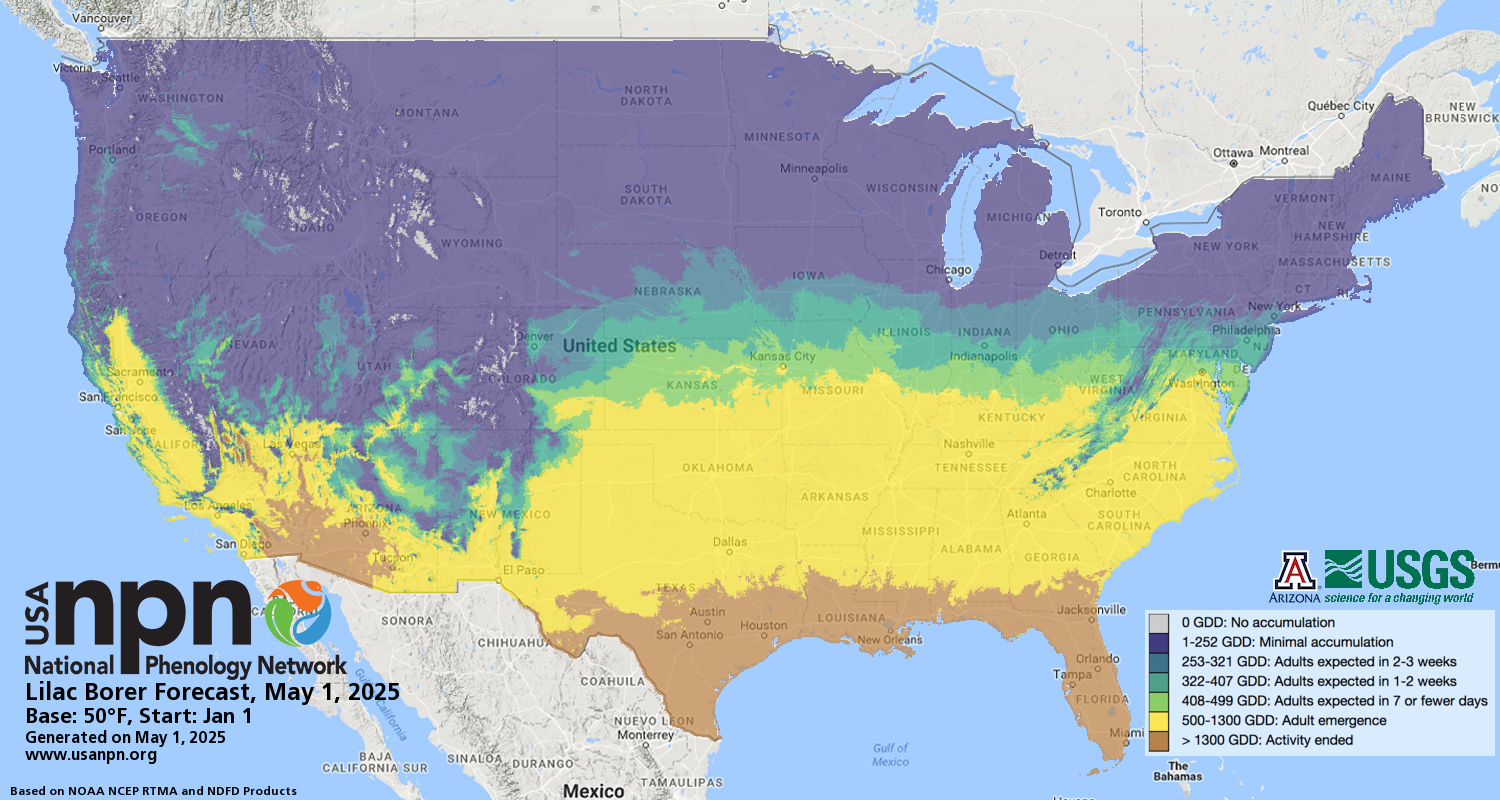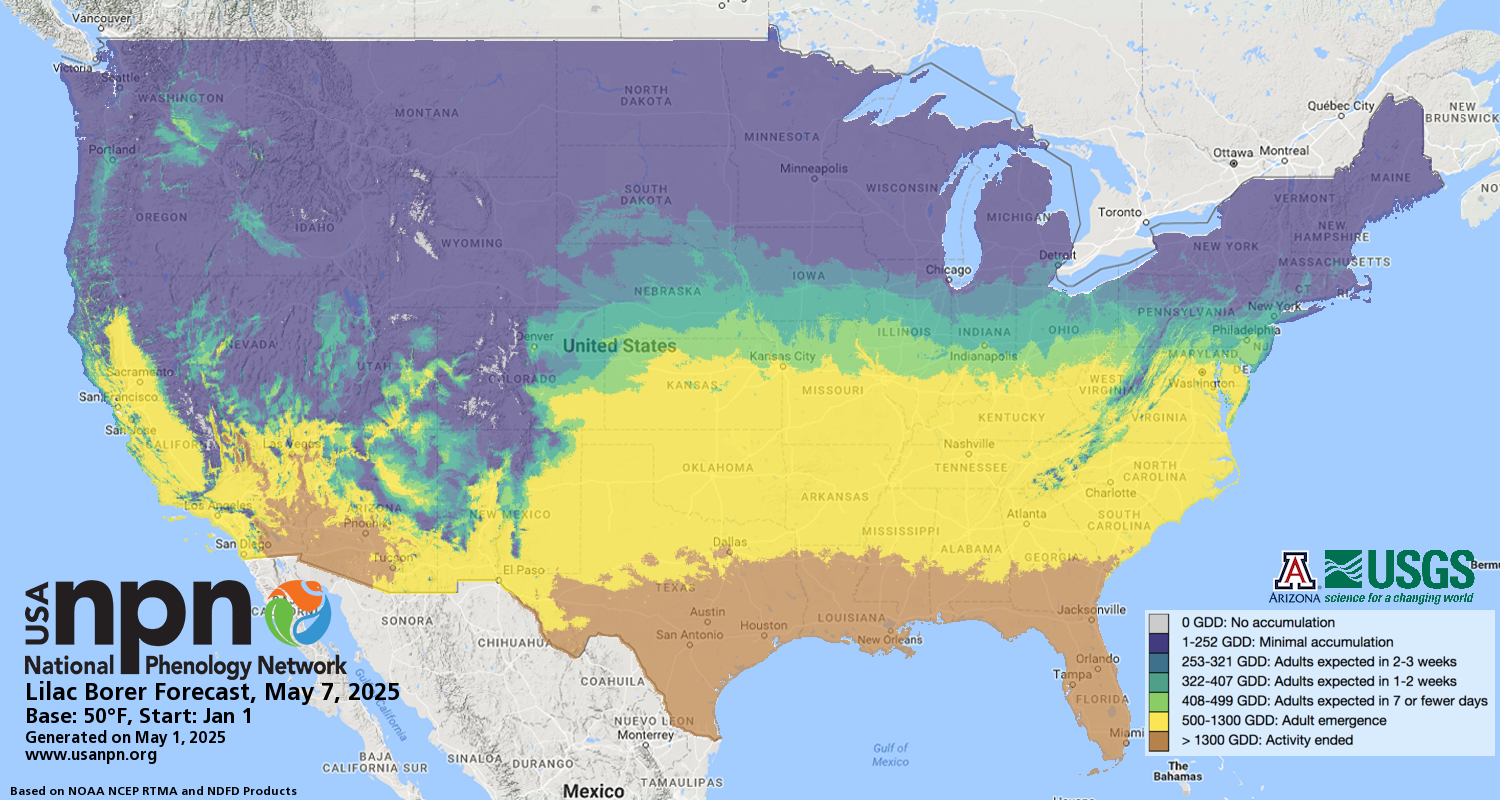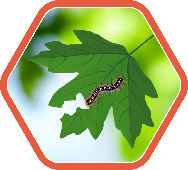Due to technical difficulties, this Pheno Forecast is not currently being updated for 2025. Please check back next year for updated map status.
Lilac borer is a clear-wing moth that can damage lilac, ash, and privet trees and shrubs by burrowing into the heartwood.
WHAT ARE PHENO FORECASTS?
Pheno Forecast maps predict key life cycle stages in invasive and pest species, to improve management efficacy. For insect pest species, Pheno Forecasts are based on published growing degree day (GDD) thresholds for key points in species life cycles. These key points typically represent life cycle stages when management actions are most effective. These maps are updated daily and available 6 days in the future.
Help us improve these maps! Our Pheno Forecast map products are still in development, and we seek input on their performance in your area. Give your feedback at the bottom of the page.
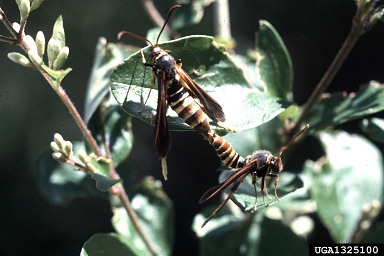
SPECIES BACKGROUND
Lilac borer (Podosesia syringae), also known as ash borer, is a clear-wing moth that is native to North America and widespread in the U.S. The larvae tunnel into the trunks and lower branches of lilac, ash, and privet. Trees stressed by drought, injury, or recent transplanting are especially susceptible to borers.
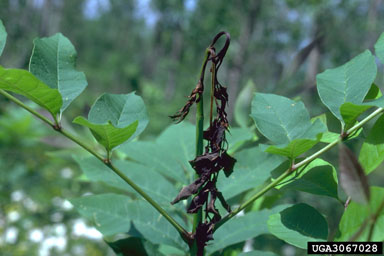
ADULT FORECAST
We forecast adult emergence based on growing degree days. Adult lilac borers overwinter in the heartwood of trees, then emerge in early summer. Trunk sprays should take place preceding or coinciding with adult emergence and subsequent egg hatch to kill larvae before they enter trunks. For specific information on preferred treatment options in your region, we recommend contacting your local extension agent. For more information, visit UMass Amherst Center for Agriculture, Food, and the Environment or Colorado State University Extension
EXPLORE THIS FORECAST
Learn more about this forecast using our visualization tool!
|
Phenophase |
GDD threshold |
Base temp |
Start date |
GDD method |
Model origin |
Source |
|---|---|---|---|---|---|---|
|
Adult emergence |
500-1300oF |
50oF |
Jan 1 |
Double sine |
KY |
More information on map development and re-use policy.
